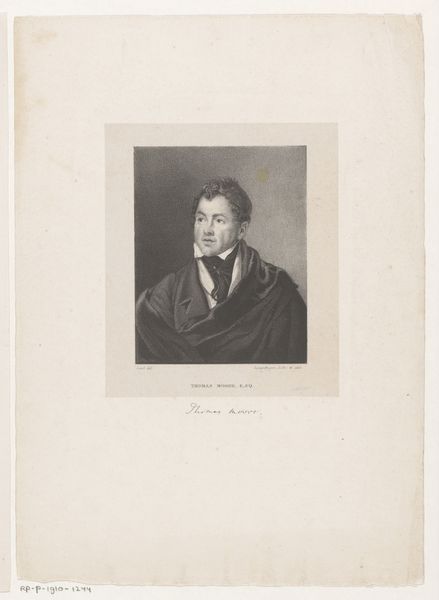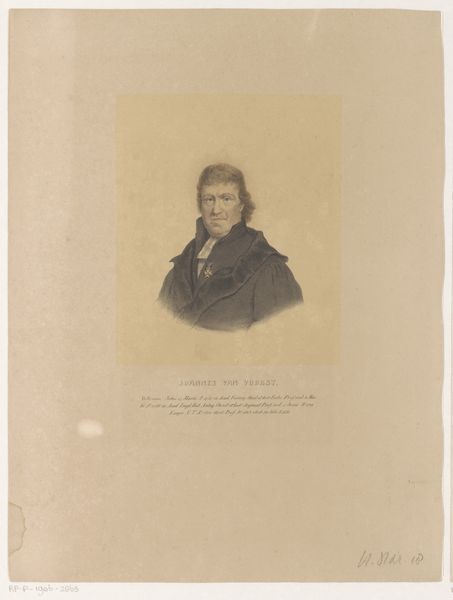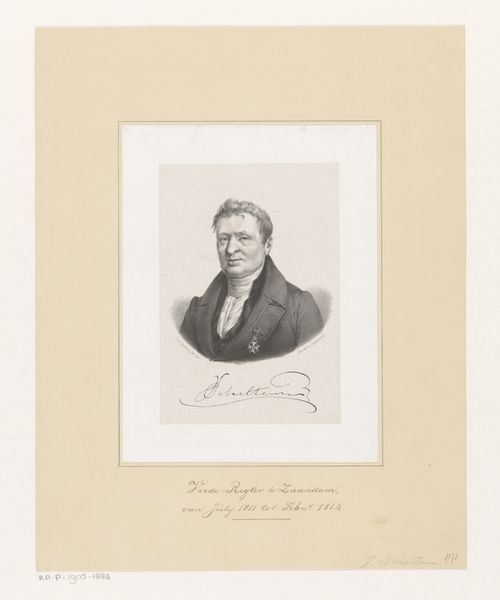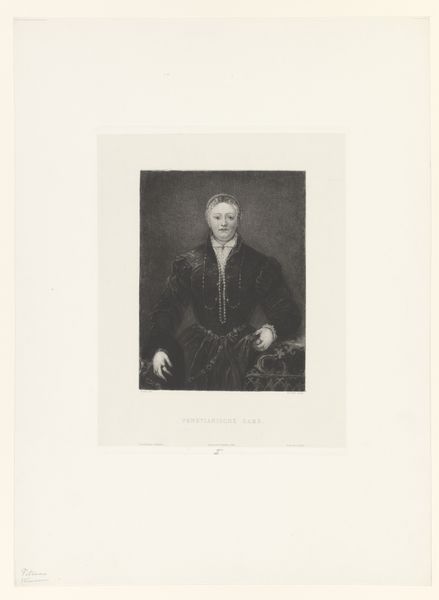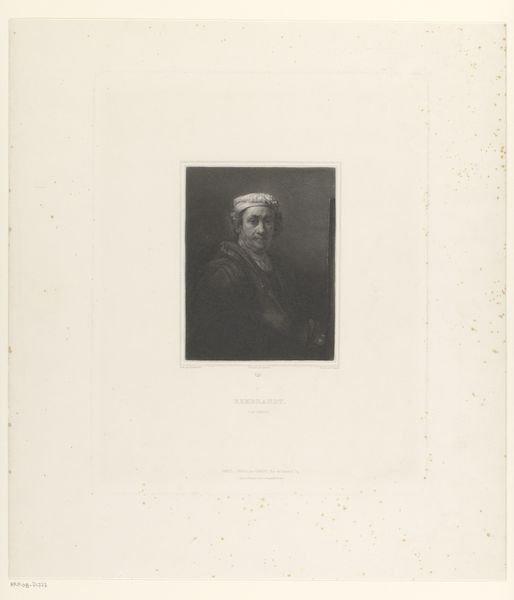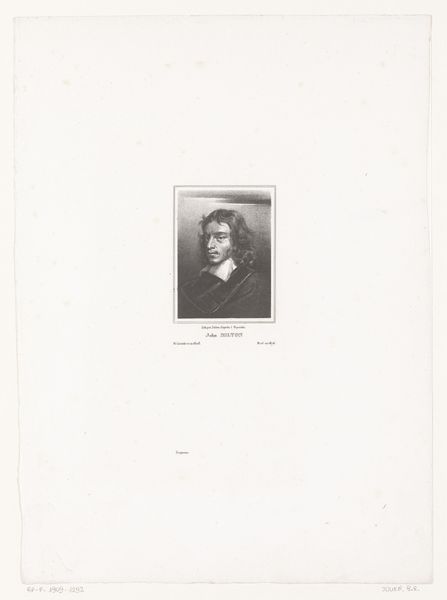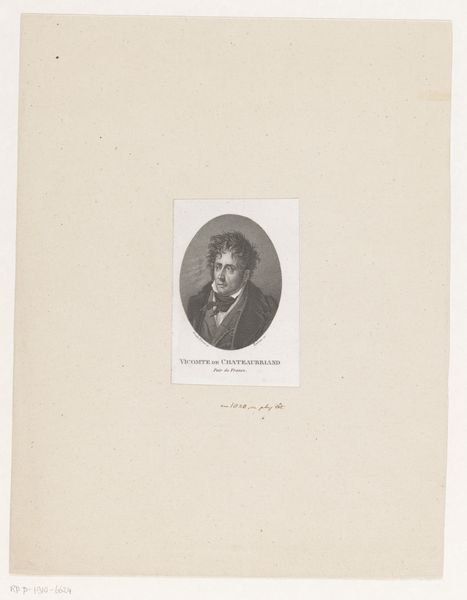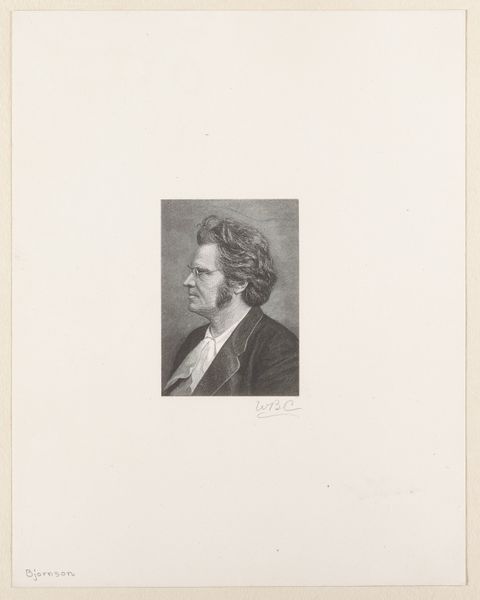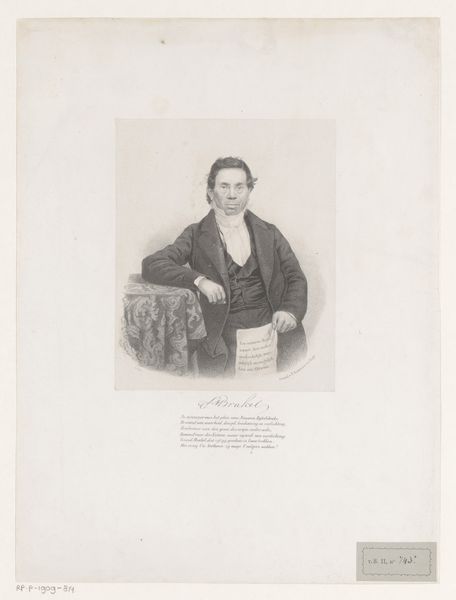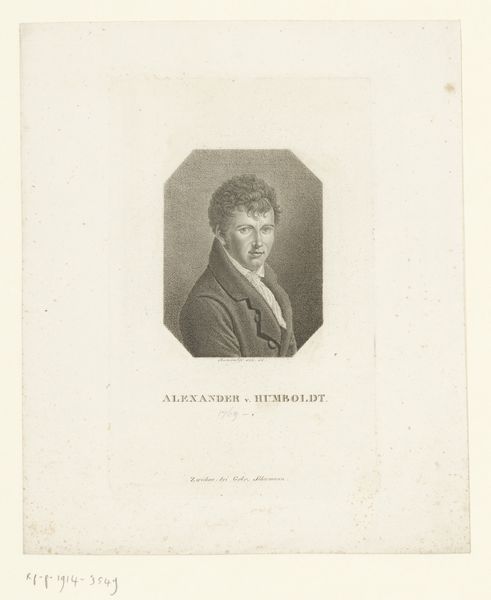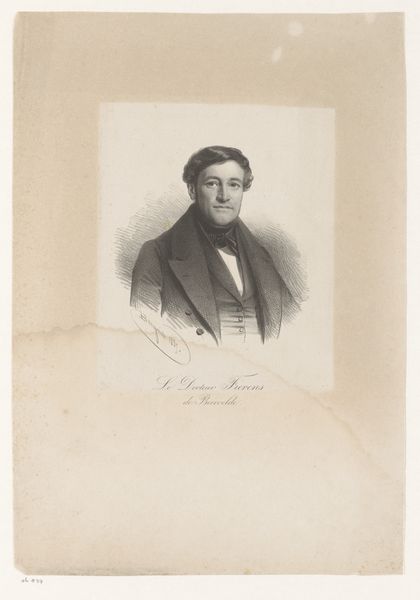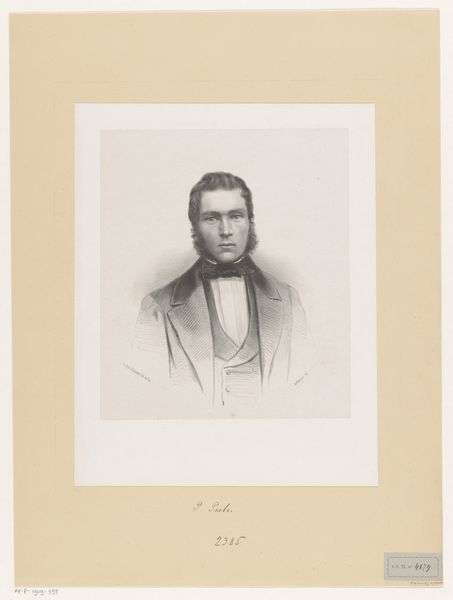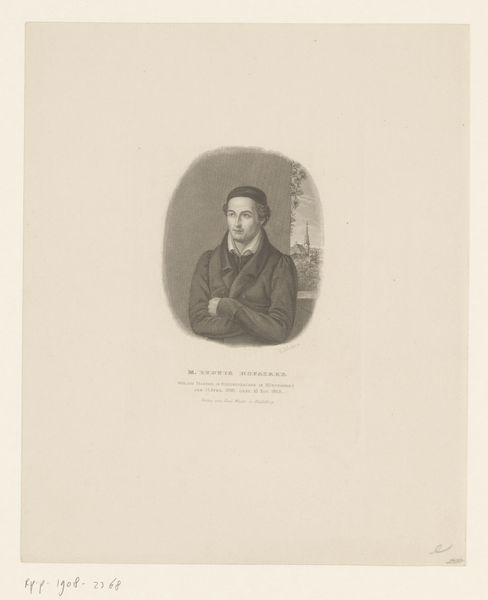
print, paper, ink, engraving
#
portrait
#
neoclacissism
# print
#
paper
#
ink
#
romanticism
#
history-painting
#
engraving
Dimensions: height 245 mm, width 180 mm
Copyright: Rijks Museum: Open Domain
Editor: This is a print titled "Portret van Domenico Artaria" by Ludwig Emil Grimm, made sometime between 1815 and 1863. It's done with ink on paper. It strikes me as rather formal, almost severe, but I'm curious, what do you see in this piece? Curator: The first thing that catches my eye is the book Artaria holds. The book symbolizes knowledge, wisdom, and perhaps, the subject's contribution to the intellectual life of his time. Notice how he holds it, almost possessively. Does that suggest anything about his status or perhaps even anxieties related to legacy and influence? Editor: I hadn't considered the book like that. More than a prop, it seems a conscious statement about identity. Do the subject's clothes also have symbolic weight? Curator: Absolutely. His clothing is of the era but in simple colors, signaling his social standing but, again, the absence of lavishness might speak to deeper societal shifts. What message would it convey? Think of how social mobility evolved over time through outward symbolic expression, Editor: Maybe a turn towards valuing intellect and hard work, rather than just birthright? It seems less overtly opulent and formal compared to portraits of aristocracy I've seen. Curator: Precisely! And note the gaze: direct and almost challenging. This would connect to ideas concerning meritocracy of Romanticism, and new ways of thinking about class and what constitutes significance, far from that era's traditional visual cues. Editor: I see! Now I am thinking how different messages are conveyed subtly through carefully placed symbols, influencing not just aesthetics but historical narratives, too. Curator: Yes! It is fascinating to consider how symbols morph in meaning while enduring across generations!
Comments
No comments
Be the first to comment and join the conversation on the ultimate creative platform.
